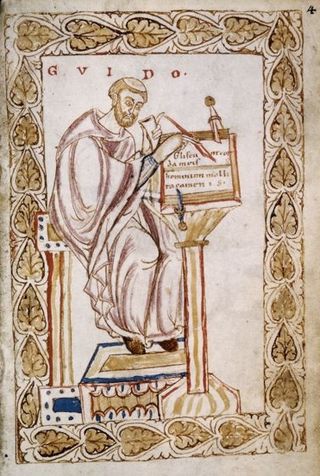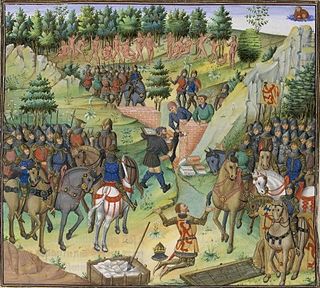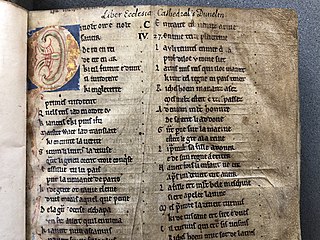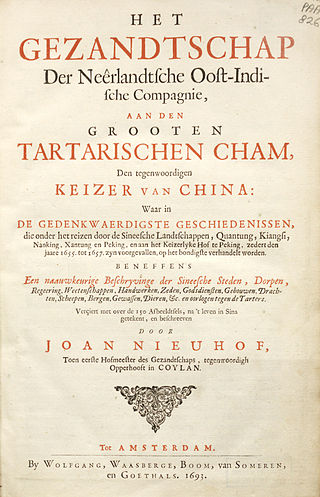
Scholasticism was a medieval school of philosophy that employed a critical organic method of philosophical analysis predicated upon the Aristotelian 10 Categories. Christian scholasticism emerged within the monastic schools that translated scholastic Judeo-Islamic philosophies, and thereby "rediscovered" the collected works of Aristotle. Endeavoring to harmonize his metaphysics and its account of a prime mover with the Latin Catholic dogmatic trinitarian theology, these monastic schools became the basis of the earliest European medieval universities, contributing to the development of modern science; scholasticism dominated education in Europe from about 1100 to 1700. The rise of scholasticism was closely associated with these schools that flourished in Italy, France, Portugal, Spain and England.

Guido of Arezzo was an Italian music theorist and pedagogue of High medieval music. A Benedictine monk, he is regarded as the inventor—or by some, developer—of the modern staff notation that had a massive influence on the development of Western musical notation and practice. Perhaps the most significant European writer on music between Boethius and Johannes Tinctoris, after the former's De institutione musica, Guido's Micrologus was most widely distributed medieval treatise on music.

Gog and Magog or Yajuj and Majuj appear in the Bible and the Quran as individuals, tribes, or lands. In Ezekiel 38, Gog is an individual and Magog is his land; in Genesis 10, Magog is a man and eponymous ancestor of a nation, but no Gog is mentioned; by the time of Revelation 20:8 Jewish tradition had long since changed Ezekiel's "Gog from Magog" into "Gog and Magog".
This article presents lists of the literary events and publications in the 15th century.

Johannes Leo Africanus was a Berber Andalusi diplomat and author who is best known for his 1526 book Cosmographia et geographia de Affrica, later published by Giovanni Battista Ramusio as Descrittione dell’Africa in 1550, centered on the geography of the Maghreb and Nile Valley. The book was regarded among his scholarly peers in Europe as the most authoritative treatise on the subject until the modern exploration of Africa. For this work, Leo became a household name among European geographers. He converted from Islam to Christianity and changed his name to Johannes Leo de Medicis.

Medieval literature is a broad subject, encompassing essentially all written works available in Europe and beyond during the Middle Ages. The literature of this time was composed of religious writings as well as secular works. Just as in modern literature, it is a complex and rich field of study, from the utterly sacred to the exuberantly profane, touching all points in-between. Works of literature are often grouped by place of origin, language, and genre.

The Travels of Sir John Mandeville, commonly known as Mandeville's Travels, is a book written between 1357 and 1371 that purports to be the travel memoir of an Englishman named Sir John Mandeville across the Islamic world as far as India and China. The earliest-surviving text is in French, followed by translations into many other languages; the work acquired extraordinary popularity. Despite the extremely unreliable and often fantastical nature of the travels it describes, it was used as a work of reference: Christopher Columbus, for example, was heavily influenced by both this work and Marco Polo's earlier Travels.

Book of the Marvels of the World, in English commonly called The Travels of Marco Polo, is a 13th-century travelogue written down by Rustichello da Pisa from stories told by Italian explorer Marco Polo. It describes Polo's travels through Asia between 1271 and 1295, and his experiences at the court of Kublai Khan.

Benjamin of Tudela was a medieval Jewish traveler who visited Europe, Asia, and Africa in the twelfth century. His vivid descriptions of western Asia preceded those of Marco Polo by a hundred years. With his broad education and vast knowledge of languages, Benjamin of Tudela is a major figure in medieval geography and Jewish history.
Johannes Cotto was a music theorist, possibly of English origin, most likely working in southern Germany or Switzerland. He wrote one of the most influential treatises on music of the Middle Ages, De musica, first printed by Gerbert in 1784. The treatise included unusually precise directions for composing chant and organum.
Niccolò de' Conti was an Italian merchant, explorer, and writer. Born in Chioggia, he traveled to India and Southeast Asia, and possibly to Southern China, during the early 15th century. He was one of the sources used to create the 1450 Fra Mauro map, which indicated that there was a sea route from Europe around Africa to India.

The Brut or Roman de Brut by the poet Wace is a loose and expanded translation in almost 15,000 lines of Norman-French verse of Geoffrey of Monmouth's Latin History of the Kings of Britain. It was formerly known as the Brut d'Engleterre or Roman des Rois d'Angleterre, though Wace's own name for it was the Geste des Bretons, or Deeds of the Britons. Its genre is equivocal, being more than a chronicle but not quite a fully-fledged romance. It narrates a largely fictional version of Britain's story from its settlement by Brutus, a refugee from Troy, who gives the poem its name, through a thousand years of pseudohistory, including the story of king Leir, up to the Roman conquest, the introduction of Christianity, and the legends of sub-Roman Britain, ending with the reign of the 7th-century king Cadwallader. Especially prominent is its account of the life of King Arthur, the first in any vernacular language, which instigated and influenced a whole school of French Arthurian romances dealing with the Round Table – here making its first appearance in literature – and with the adventures of its various knights.
Egardus was a European Medieval composer of ars subtilior. Almost no information survives about his life, and only three of his works are known. A certain "Johannes Ecghaerd", who held chaplaincies in Bruges and Diksmuide, may be a possible match for Egardus. The extant works—a canon and two Glorias—appear to be less complex than music by mid-century composers, possibly because they date from either very early or very late in Egardus' career.
An imaginary voyage is a kind of narrative in which utopian or satirical representation is put into a fictional frame of travel account.

Salomon Schweigger was a German Lutheran theologian, minister, anthropologist and orientalist of the 16th century. He provided a valuable insight during his travels in the Balkans, Constantinople and the Middle East, and published a famous travel book of his exploits. He also published the first German language translation of the Qur'an.

An embassy from the East-India Company of the United Provinces is a book written by Dutch author and explorer Johan Nieuhof. The book served as a major influence in the rise of chinoiserie in the early eighteenth century.
Bernard the Pilgrim, also called Bernard the Wise and Bernard the Monk, was a ninth-century Frankish monk. He is most recognisable for the composition of a travelogue, in which he details his journey around the Mediterranean, travelling through Italy, Egypt, the Holy Land, and France.

James of Verona was an Augustinian friar who made a pilgrimage to the Holy Land in 1335 and wrote an account of his travels in Latin, the Liber peregrationis. He was probably born in Verona around 1290. He entered the Augustinian order in 1310 or 1311, twenty-five years before his pilgrimage.












